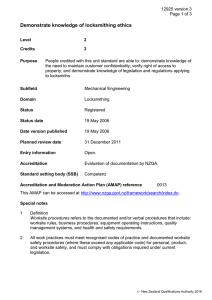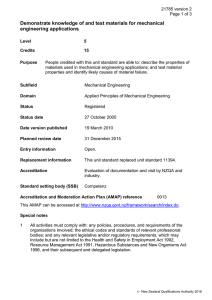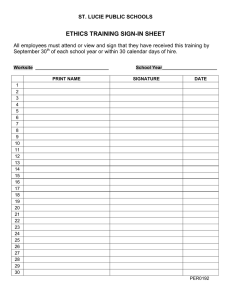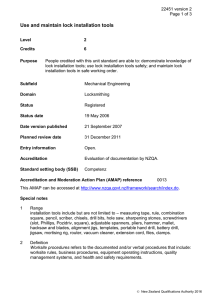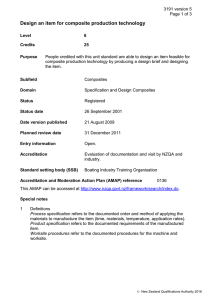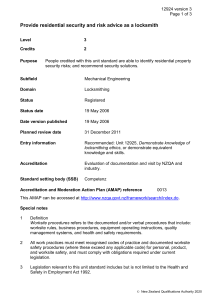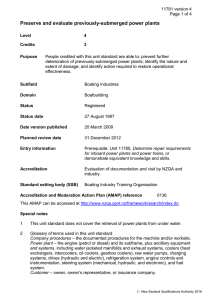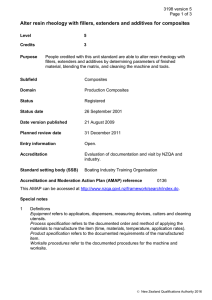Make a key without a duplicate or a code
advertisement
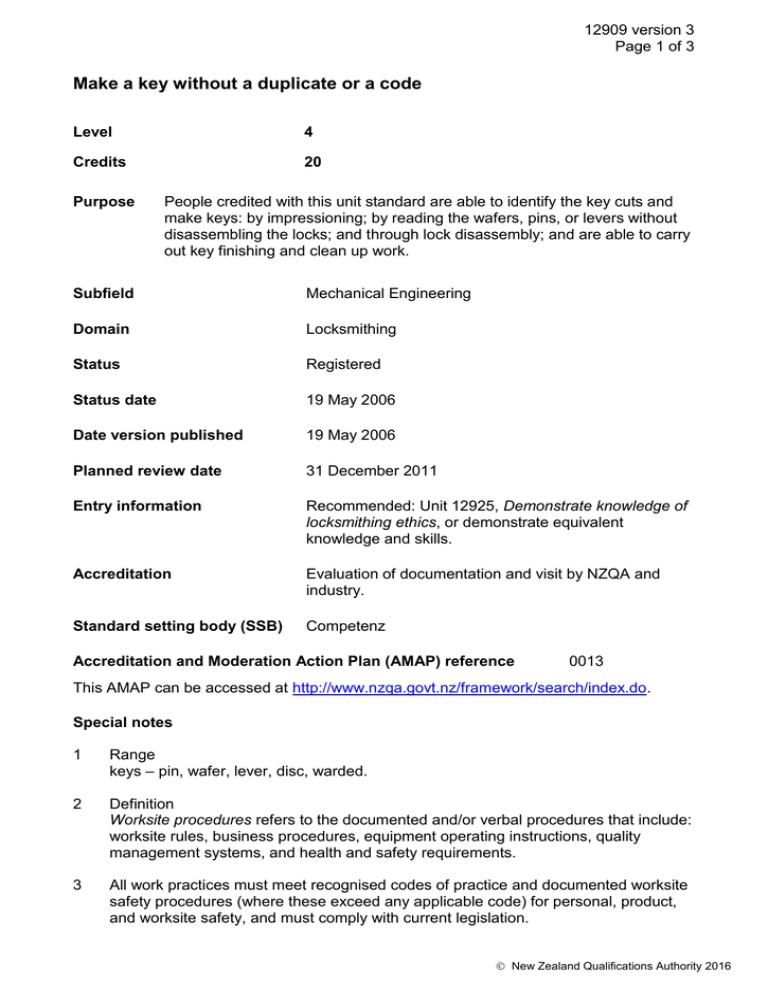
12909 version 3 Page 1 of 3 Make a key without a duplicate or a code Level 4 Credits 20 Purpose People credited with this unit standard are able to identify the key cuts and make keys: by impressioning; by reading the wafers, pins, or levers without disassembling the locks; and through lock disassembly; and are able to carry out key finishing and clean up work. Subfield Mechanical Engineering Domain Locksmithing Status Registered Status date 19 May 2006 Date version published 19 May 2006 Planned review date 31 December 2011 Entry information Recommended: Unit 12925, Demonstrate knowledge of locksmithing ethics, or demonstrate equivalent knowledge and skills. Accreditation Evaluation of documentation and visit by NZQA and industry. Standard setting body (SSB) Competenz Accreditation and Moderation Action Plan (AMAP) reference 0013 This AMAP can be accessed at http://www.nzqa.govt.nz/framework/search/index.do. Special notes 1 Range keys – pin, wafer, lever, disc, warded. 2 Definition Worksite procedures refers to the documented and/or verbal procedures that include: worksite rules, business procedures, equipment operating instructions, quality management systems, and health and safety requirements. 3 All work practices must meet recognised codes of practice and documented worksite safety procedures (where these exceed any applicable code) for personal, product, and worksite safety, and must comply with current legislation. New Zealand Qualifications Authority 2016 12909 version 3 Page 2 of 3 4 Legislation relevant to this unit standard includes but is not limited to the Health and Safety in Employment Act 1992. Elements and performance criteria Element 1 Identify the key cuts and make keys by impressioning. Performance criteria 1.1 Key blanks are selected and prepared according to worksite procedures. 1.2 Key dimensions are interpreted from key blanks according to worksite procedures. 1.3 Key measurement and depth are transposed to the key blank, using hand tools, according to worksite procedures. Element 2 Identify the key cuts and make a key by reading the wafers, pins, or levers without disassembling the locks. Performance criteria 2.1 The lock type and associated reference material are identified from manufacturer’s specifications according to worksite procedures. 2.2 Tools are selected and used to read the lock wafers, according to worksite procedures. 2.3 Reference material is used to identify the wafer spacing and depths, according to manufacturer’s specifications. 2.4 Key measurement and depth are transposed to the key blank, using hand tools, according to worksite procedures. Element 3 Identify the key cuts and make a key through lock disassembly. Performance criteria 3.1 The lock is disassembled and the parts laid out in sequence, without loss of or damage to parts. 3.2 Disassembled lock parts are interpreted to identify the key blank or ready made key, according to worksite procedures and manufacturer’s specifications. New Zealand Qualifications Authority 2016 12909 version 3 Page 3 of 3 3.3 Key measurement and depth are transposed to the key blank, using hand tools, according to worksite procedures. Element 4 Carry out key finishing and clean up work. Performance criteria 4.1 Key finishing is carried out according to worksite procedures. Range deburring, gauging. 4.2 Checking is carried out for accurate key generation according to worksite procedures. 4.3 Key cutting area is cleaned and any waste material is removed according to worksite procedures. Please note Providers must be accredited by the Qualifications Authority, or an inter-institutional body with delegated authority for quality assurance, before they can report credits from assessment against unit standards or deliver courses of study leading to that assessment. Industry Training Organisations must be accredited by the Qualifications Authority before they can register credits from assessment against unit standards. Accredited providers and Industry Training Organisations assessing against unit standards must engage with the moderation system that applies to those standards. Accreditation requirements and an outline of the moderation system that applies to this standard are outlined in the Accreditation and Moderation Action Plan (AMAP). The AMAP also includes useful information about special requirements for organisations wishing to develop education and training programmes, such as minimum qualifications for tutors and assessors, and special resource requirements. Comments on this unit standard Please contact the Competenz qualifications@competenz.org.nz if you wish to suggest changes to the content of this unit standard. New Zealand Qualifications Authority 2016
